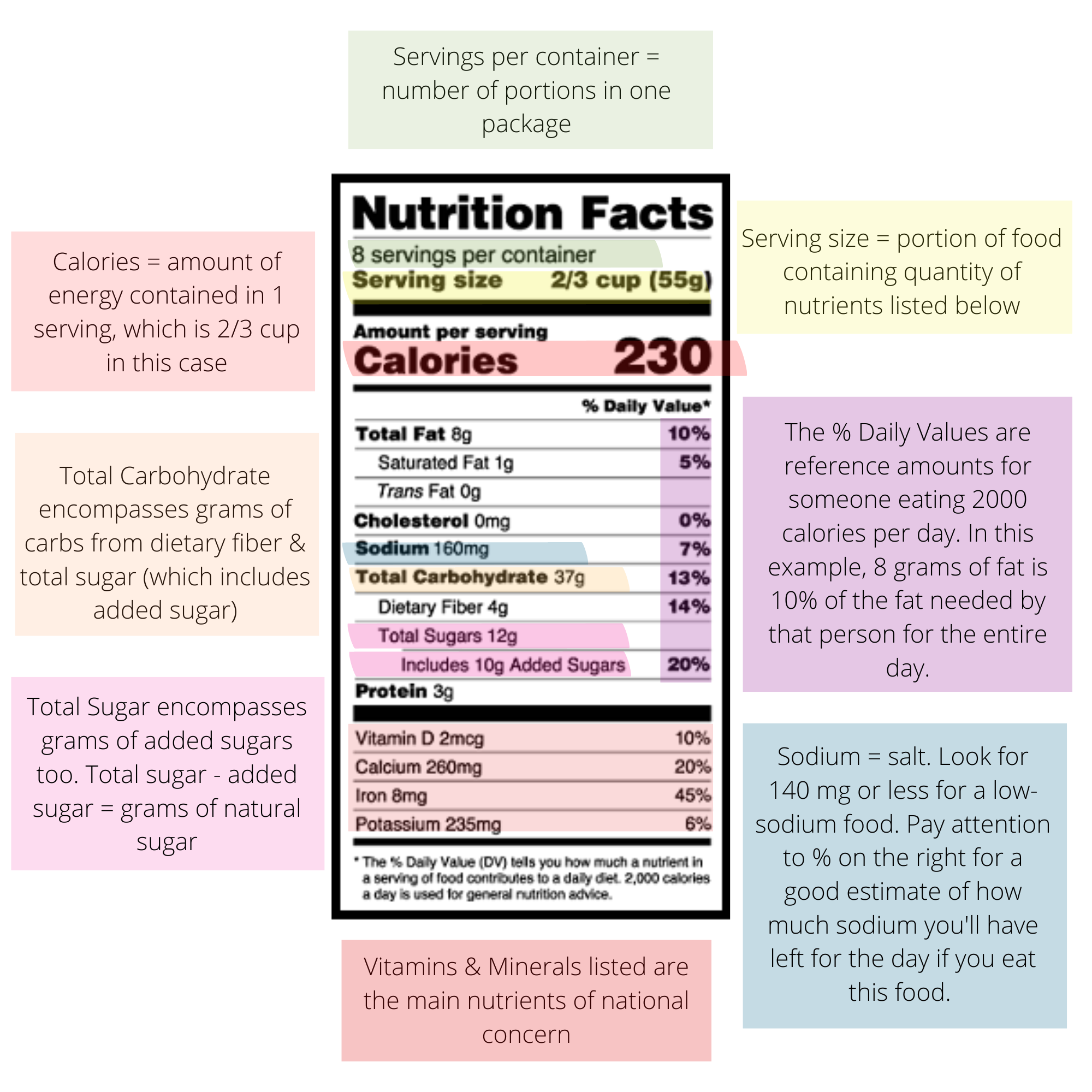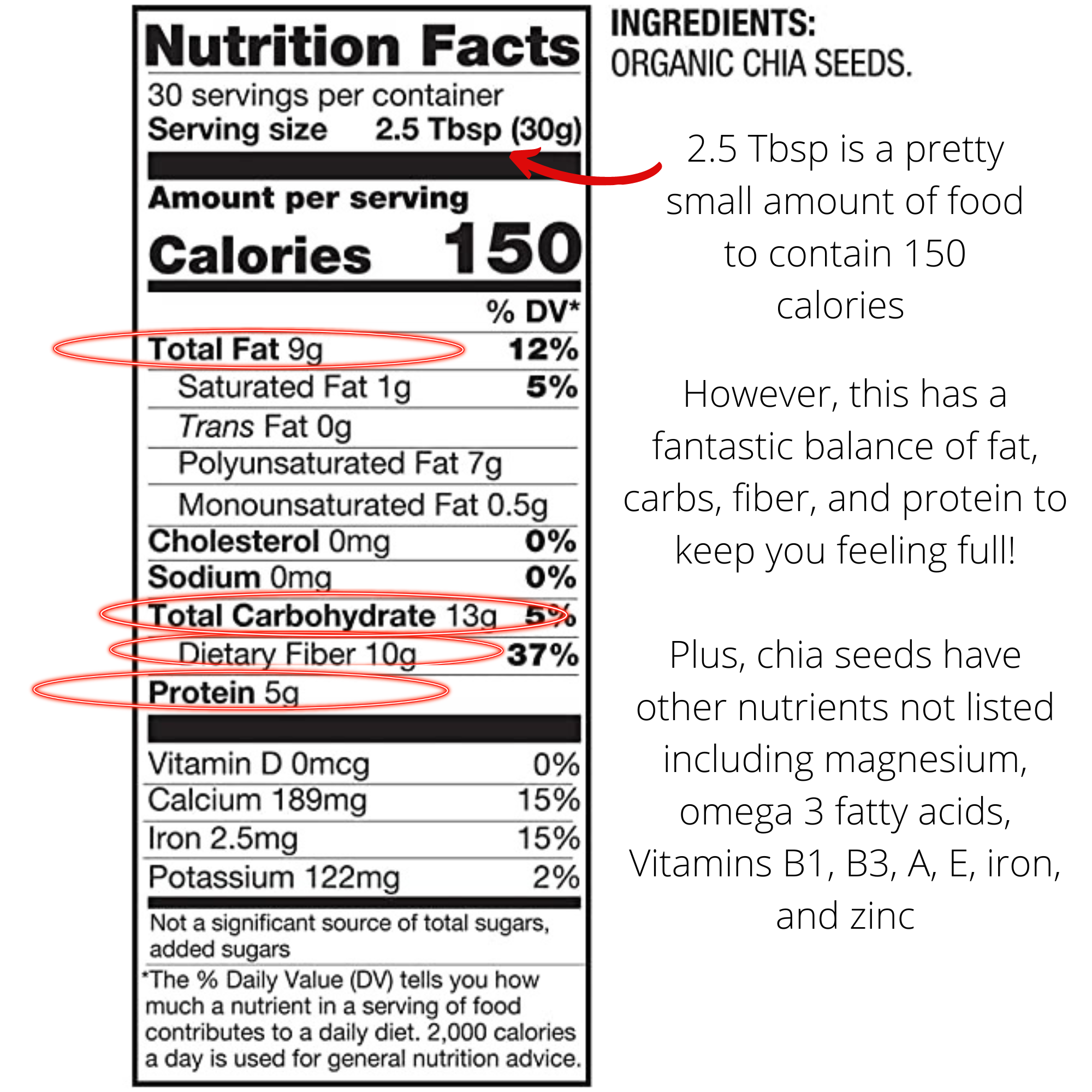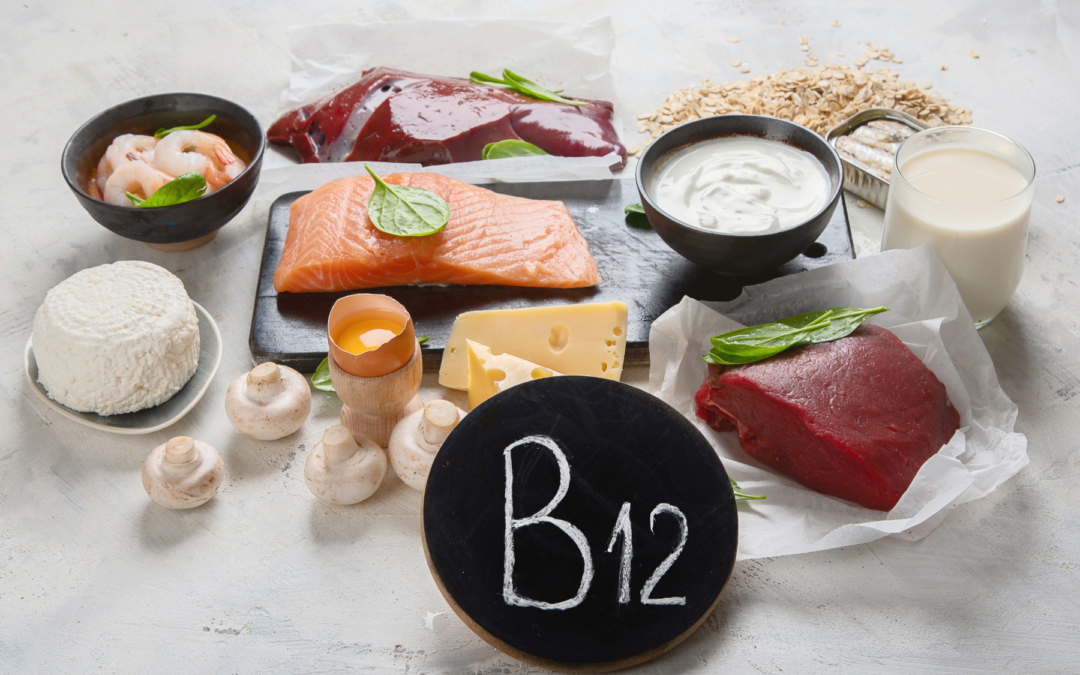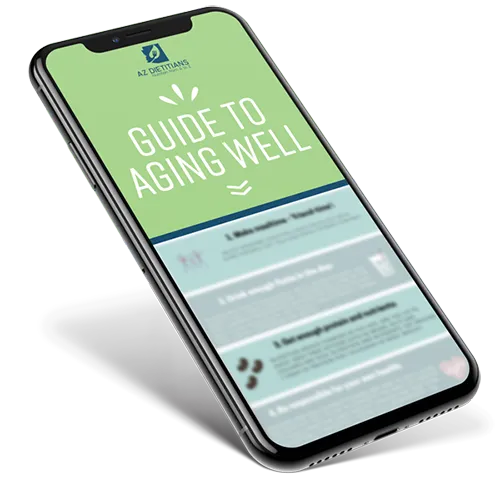Written by Rachel Raymond, RDN
Are you concerned about what is in your food? Many products seem like fantastic options from the front of the package – and sometimes even the nutrition facts label – but may contain certain ingredients that I recommend avoiding. Today I’m going over how I look at a food product label and ingredient list so that you can read your labels like a pro. I’ll even talk about ingredients to watch out for, including the safe and the sketchy.
How I Read a Food Label as a Dietitian
Step #1 – First identify any allergies or sensitivities
As a rule of thumb, as a dietitian, I always jump straight down to the allergen information below the ingredient list. Why? I avoid food that has gluten for personal health reasons. You’ll also want to skip to this list if you have any food allergies or sensitivities. This will help you avoid spending lots of time reading through a product label that you’ll end up putting back on the shelf.
Products must list the most common allergens they contain below the ingredients label. They do so in bold lettering by saying, “Allergen Information: Contains wheat, eggs, shellfish, soy, tree nuts, peanuts, dairy, etc.” If you can confirm that it contains your allergen/sensitivity right off the bat, then there is no reason to continue reading the rest of the label. This always saves me lots of time.
Step #2 – Check out the first few ingredients
I then let my eyes jump up to the ingredient list. At this point, I’m not going to read the entire ingredient list but rather make sure the first few ingredients align with my goals. Ingredients are listed in order of greatest weight to least weight. This means that ingredients listed higher on the list make up a larger amount of the actual food product than the ones at the end of the list. If one of the first three ingredients is sugar or some other form of sugar, I will likely set it back on the shelf.
However, there are times when I don’t follow this sugar rule. For example, my favorite fruit spread is Crofter’s Organic Strawberry Fruit Spread found at Sprouts. Its ingredient list is as follows: Organic strawberries, organic cane sugar*, natural apple pectin, ascorbic acid (vitamin c), citric acid.
From this ingredient list, I know that the first ingredient is strawberries, the second ingredient is cane sugar, and the third is pectin. This product only has 3 main ingredients and 2 additives. That’s when I look at the sugar content in the serving size and assess from there whether or not I want the product. Fun side fact: fruit spread has much less sugar than jam. For a product to be called a “jam,” it must contain at least 60% sugar. Fruit spreads have much less sugar than jam, so look for a fruit spread instead of jam next time you want to sweeten up your toast.
Step #3 – Look at the serving size of the product
After I’ve checked the first three ingredients to make sure they don’t include things like sugar/corn syrup, I head on up to the top, where it reads “Nutrition Facts.” This is where I will check the servings in the container and the serving size itself. Many bagged food products contain air to protect the product from getting smashed (like chips).
Looking at the serving size not only tells me how much of this food item contains all the nutrients listed below it. It also helps me determine if purchasing this product is worth the price. Sometimes it appears to have a lot of servings, but it only has 3. I then do a little math in my head to decide if I want this product or not.
Anyway, the serving size is not necessarily a portion size that people commonly consume. Although, product labels are getting better at making the serving size more realistic. The serving size is the amount of product for which all the nutrition information is listed.
For something like a fruit spread, I might expect the serving to be 2 tablespoons. However, my favorite spread lists a serving size as 1 tablespoon. This is great to know because it can help me to be more conscious of my total calorie intake. We can’t always assume that a portion we dish-out contains what the label lists. Most of us often dish out much more than a designated serving size.
Step #4 – Look at the calories & macros
Continue reading down the Nutrition Facts label by looking at the calories and then macronutrients (fat, carbohydrates, and protein). Everyone has different needs, so I can’t address exactly how many calories or macros to look for when you read a label. However, I’ll walk you through how I read through the label personally.
The calories matter, but what matters more (to me personally) are the macronutrients. What makes up those calories? Are they mainly coming from sugar which will lead me to feel hungry soon after eating it? Or are they mostly coming from protein, fat, and fiber that will keep me full? I’m always willing to purchase high-calorie foods if they are great blood-sugar balancing foods that won’t leave me craving something an hour later.
For example, take a look at this food label for chia seeds and my thoughts about it:
Many people might be afraid to purchase chia seeds if they only view this food from a calorie perspective. Yes, it has a lot of calories in a small amount of food, but it also has a great balance of macronutrients, micronutrients, and fiber. When I look at a product, I consider what I will use it for. Is it to eat on its own? Is it to add to something else?
Obviously, no one chows down on plain chia seeds. Instead, I would add these to smoothies, yogurt, oatmeal, and more. A delicious blood-sugar balancing treat that you can make with chia seeds is chia pudding with 2.5 tbsp chia seeds, half cup milk, and a tsp of sweetener.
When it comes to choosing a food based on its calories and macronutrients, consider the following:
-Am I eating this on its own?
-Am I going to add this to a meal?
-When am I going to eat this?
I have to bring up one more food example before moving on. I am often asked if beans are bad because they have lots of carbs. In fact, someone with diabetes told me today that she’s donating all of her canned beans because “they have too many carbs.” I told her to go grab that box right away and put it back in her pantry!
You’ll want to look at the label on beans thoroughly without just paying attention to the carbs. If you do, you’ll also notice they have lots of fiber, protein, and some fat. Beans are a fantastic balance of macronutrients, nearly all on their own.
Step #5 – Read the rest of the ingredients
Check out the rest of the ingredients and micronutrients. Sometimes we seek out food products for specific reasons. One common reason is for athletics. In this case, I’d pay attention to the amount of potassium and sodium listed on a label. If I’m avoiding certain additives, I will look at the rest of the ingredient list.
Pay attention to these additives
Tocopherols – Sounds like a scary additive, right? Tocopherol is another name for vitamin E! Vitamin E is a great antioxidant that helps prevent food from oxidizing (going bad). So, even though many people are telling you only to eat foods you can pronounce, that’s not always correct.
Citric acid – This is another ingredient that you might question. Citric acid is an acidic compound found naturally in many fruits. It is another type of antioxidant to keep food from spoiling that you don’t need to be afraid of.
Artificial food colorings – These are actually ingredients you may want to avoid. Artificial food colorings are dyes that add color to food. Red 3 is an artificial coloring with studies to support that it increases thyroid tumors in animal studies. Some food companies are recognizing this issue and coloring their foods with natural colorings.
Sodium Nitrite – This additive helps prevent bacteria growth in processed meats. However, when it is exposed to heat, it turns into nitrosamine, which is harmful to health. In fact, processed meats are considered a carcinogen (cancer-causing agent) mainly because they contain nitrites. When buying deli meats, pay attention to the ingredient list for this additive. There are better alternatives out there.
Guar gum – this additive is used to thicken and bind foods. It is found in most processed foods. Guar gum is actually high in fiber and is included in certain supplements for gut health. There is some evidence to support how it can reduce symptoms of IBS (1). Some people who eat guar gum with a meal tend to feel more full and snack less throughout the day. However, guar gum may have some negative effects on health. It swells up in the GI tract, leading to blockages in the small intestine. In some people, it also increases gas and bloating. My final say: pay attention to labels and track your symptoms associated with your food. If you feel fine after eating this additive, you may continue to enjoy foods with this additive.
There are so many additives out there that we don’t have time to cover them all. If you’re interested in learning more, please contact us at AZ Dietitians!
If you want more in-depth understanding of the food label, check out the FDA’s website here.
References
1) https://www.ncbi.nlm.nih.gov/pmc/articles/PMC4392570/








